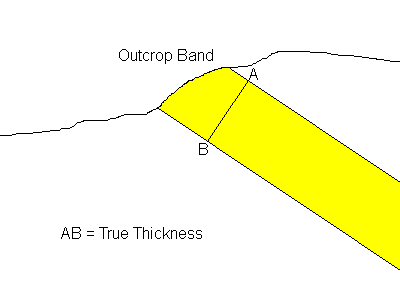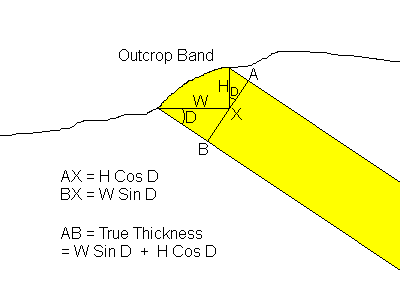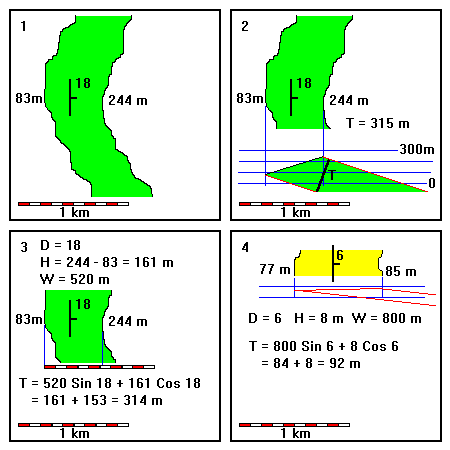Find the True Thickness of a Layer From Map Data
Steven Dutch, Professor Emeritus, Natural and Applied Sciences, University of Wisconsin - Green Bay
A rock layer shown on a geologic map will outcrop as a band. The layer is truncated obliquely by the topography and its width will be different from the true thickness. Only if the layer is vertical is the outcrop width the same as the true width. In addition, the upper and lower contacts may be at different elevations. In the extreme case of a layer that outcrops on the face of a vertical cliff, the map width of the outcrop will be zero.
| We can find the true thickness, measured perpendicular to the layer, by drawing a cross- section as shown at right |  |
|
We can also calculate the true thickness. The dip of the layer is D; the width of the outcrop on the map is W and the elevation difference between the contacts is H. From the diagram at right, it is easy to see that: True Thickness = W Sin D + H Cos D |
 |
Two special cases are of interest.
- If the topography is flat, H = 0 and True Thickness = W Sin D
- For a vertical section, as in a borehole or cliff, W = 0 and True Thickness = H Cos D
Example
 |
1. The problem. Given the map data at left, find the true thickness of the sill. 2. Draw a cross-section to find the true thickness 3. You can also find W and H from the map and calculate the thickness using True Thickness = W Sin D + H Cos D 4. Calculation may be the only practical method if the dip is too shallow to construct an accurate cross-section. |
Return to Course Syllabus
Return to Techniques Manual Index
Return to Professor Dutch's Home Page
Created 17 March 1999, Last Update